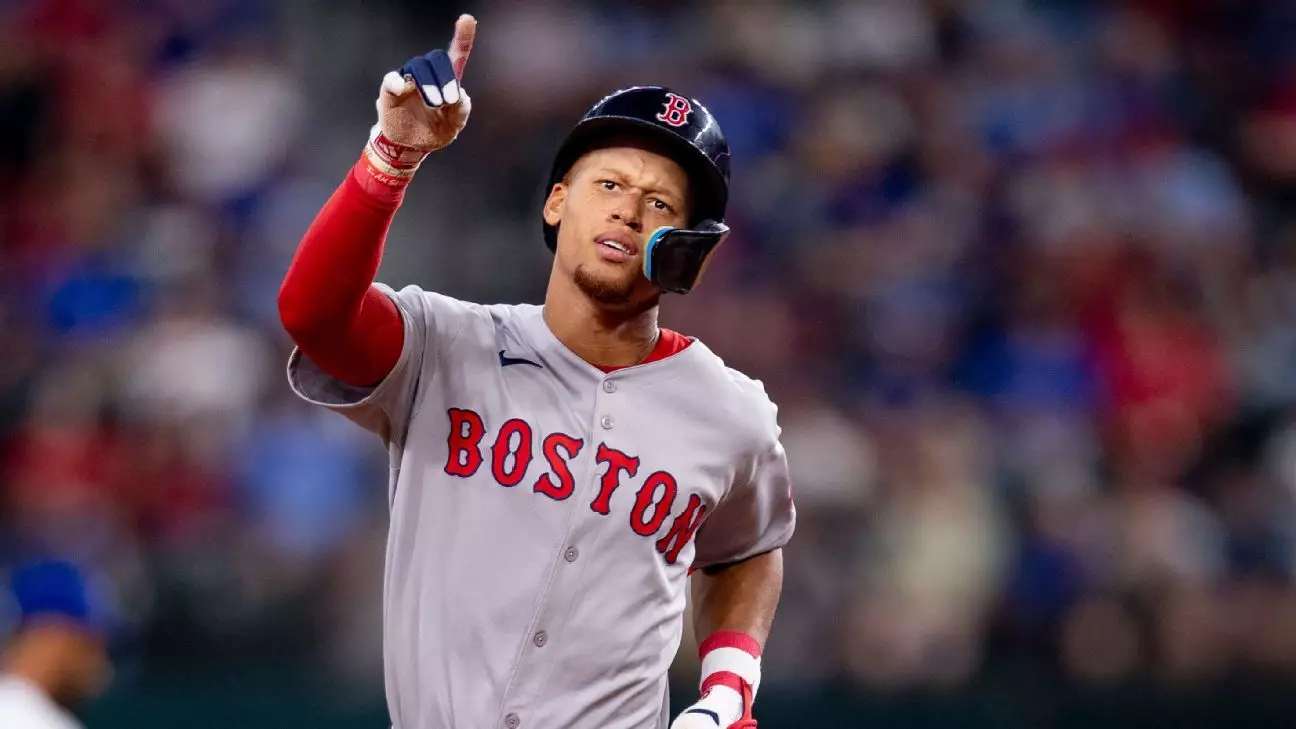Revitalizing the Red Sox: The Impact of Injury Returns on Team Dynamics
There’s something uniquely exhilarating about seeing your favorite team undergo transformation. For fans of the Boston Red Sox, this season has been nothing short of a rollercoaster. The decision to promote Wilyer Abreu while sending rookie sensation Kristian Campbell to Triple-A is a testament to the intricate chess game that is Major League Baseball management. As someone who has watched this team with bated breath, I can relate to the emotional turmoil these decisions bring. But it’s not just about the stats; it’s about the heart and soul of a team.
When injuries strike, they can shift team dynamics in unexpected ways, creating ripples that affect every player on the roster. This particular move by the Red Sox illustrates the complexities involved in balancing young talent with the return of established players. It’s like watching a delicate dance unfold on the field, where every step counts and one wrong move could cost you dearly. As a fan, I find myself rooting for these young players, hoping they find their footing amidst the pressure.
Key Takeaways
- The promotion of Wilyer Abreu highlights strategic management in MLB.
- Kristian Campbell’s journey underscores challenges faced by rookies.
- Team dynamics are profoundly influenced by player injuries and returns.
The Trials and Triumphs of Young Talent
Being a rookie in the MLB is no small feat, and Kristian Campbell’s journey is a prime example of this. Early in the season, Campbell dazzled fans with a .301 batting average in April, earning him accolades as a rising star. However, as many rookies discover, sustaining performance at such high levels amidst seasoned professionals can be daunting. The harsh reality set in when his average plummeted post-April, serving as a reminder of how fickle success can be in this league.
The Red Sox saw immense potential in Campbell, granting him an eight-year, $60 million contract extension to secure his place as their future second baseman. Yet, the weight of these expectations seemed to have taken its toll on him. It’s a lot to shoulder for someone so early in their career, and it led to a downward spiral that prompted the franchise to reconsider its approach. For Campbell, being sent back to Triple-A might just be the reset he needs to regain his confidence and refine his game away from the glaring spotlight.
Understanding Rookie Transitions
The challenges faced by rookies like Campbell underscore broader issues within baseball regarding how young players are treated and mentored. Moving from minor league success to facing major league veterans is no easy transition. In Campbell’s case, his lack of experience at this level was evident despite his promising potential. The Red Sox believed in his unique skills—his batting stance and impressive exit velocity—but perhaps underestimated the adjustment period needed for him to thrive under MLB pressure.
The organization must reflect on how they prepare players for these demands. While pedigree offers an initial advantage, fostering an environment where rookies can grow without suffocating under pressure is equally important. Could more time or mentorship have made a difference for Campbell? These questions linger as the Red Sox continue to refine their strategy around developing young talent.
An Outfield Revitalized
With Wilyer Abreu’s return, there’s a renewed energy within the Red Sox roster. His presence not only fills a crucial gap but also elevates competition among outfielders. Though his .245 batting average may not jump off the page, his 13 home runs and versatility bring much-needed depth as Boston heads into key matchups against teams like the San Francisco Giants. The combination of Abreu with talents like Gold Glove candidate Ceddanne Rafaela and All-Star Jarren Duran paints an exciting picture for fans.
Adding to this dynamic is Roman Anthony’s continued stellar performance, which complicates decisions even further given his current role occupying Abreu’s previous spot. This healthy competition pushes each player to elevate their game—a necessary catalyst for collective improvement. The diverse skill sets—from Rafaela’s defensive prowess to Duran’s speed—create an infusion of talent aimed at revamping Boston’s chances as playoffs loom on the horizon.
Navigating Pressures on Young Players
The narrative surrounding Kristian Campbell serves as a poignant reminder of how thin the line between potential and performance can be for professional baseball players. Unlike other sports where transitions might be more gradual, baseball demands immediate adaptation and resilience from its newest members. For Campbell, returning to Triple-A offers him time for reflection—an opportunity to recalibrate before attempting another breakthrough into MLB ranks.
In an organization with such storied history as the Red Sox, every decision carries significant weight both for individuals and team success overall. They must navigate carefully through mental and emotional aspects affecting their athletes while managing injuries and stints in minors effectively too! Cultivating environments where young talents feel supported rather than overwhelmed becomes vital; after all these nurturing approaches could determine not only individual trajectories but also Boston’s fortunes moving forward!
Final Thoughts
The ebb and flow of team dynamics within any sports franchise reflect larger truths about resilience adaptation perseverance amidst constantly shifting environments whether due injury returns new promotions alike! Watching Boston Red Sox navigate these changes highlights importance balancing short-term gains against long-lasting development particularly when dealing promising yet inexperienced youngsters who need guidance patience above all else succeed big stage! As fans we hope see them rise challenges ahead growing stronger together under pressures intense scrutiny inevitable part professional athletics today!
Red Sox
MLB
baseball dynamics
rookie challenges


Leave a Reply